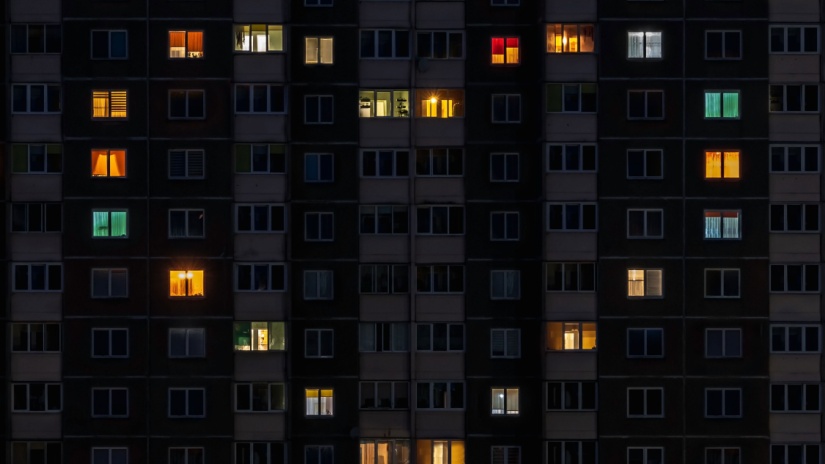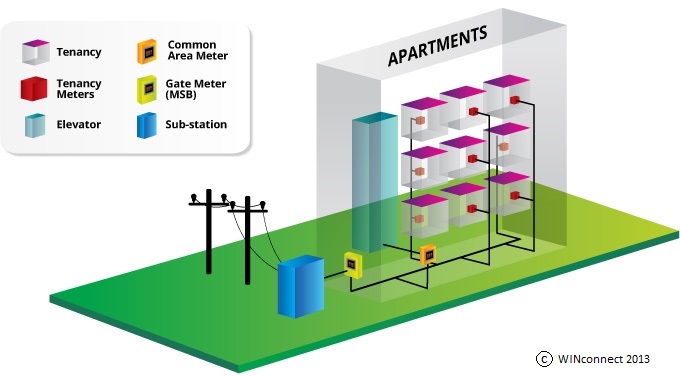Knowledge Centre
What is an embedded electricity network?

If you reside in an apartment complex or similar residential setting, you might be part of an embedded electricity network. But what exactly does this mean, how does it function, and what can you do about it? Let’s break it down.
What is an embedded electricity network?
In locations such as apartment buildings, retirement villages, caravan parks, and shopping centres, the electrical setup is often designed to enable the site owner to supply energy to all tenants and residents. This setup is known as an embedded network.
Typically, the site owner purchases energy from an energy retailer and then resells it to the individual consumers within the site. In some cases, the energy provided might be generated on-site.
Those who sell energy within embedded networks are often referred to as "exempt sellers" because it does not need authorisation from the Australian Energy Regulator (AER) to operate as energy retailers. However, it must hold a valid exemption from the AER and adhere to specific regulations that safeguard consumer rights.
How do embedded electricity networks work?

Source: WINConnect
According to WINconnect, which manages sites in Victoria, New South Wales, and Queensland, embedded networks are set up to consolidate the energy used within a complex to a single metered point. Individual sub-meters then track each tenant's energy usage, and bills are issued accordingly.
While embedded electricity networks offer several benefits, it's worth questioning if these advantages are passed down to the consumers. Although suppliers and building developers seem to gain the most from these networks, the essential factor is the consumer.
Without consumer participation, the entire system wouldn't function, making it crucial that there are tangible benefits for the residents as well.
Are embedded electricity networks a good idea?
For building developers, embedded networks offer a simple way to supply power to all properties on a site. Some residents might appreciate the convenience of having one less thing to manage when moving. However, not everyone is pleased with this arrangement.
Many embedded network providers claim to offer competitive prices, and while this is true for some, other customers may prefer to shop around for the best deals. Energy cost is only part of the equation; excellent customer service is also crucial for many customers.
Additionally, some energy providers offer green energy solutions, allowing customers to offset their carbon footprint by feeding green energy back into the grid. If an embedded network doesn’t offer these green options, it might be unappealing to environmentally conscious customers.
Despite being part of an embedded network, bill-payers aren’t necessarily stuck with that supplier. The Power of Choice legislation, introduced in 2018, requires embedded networks to have an Embedded Network Operator (ENO) to assist customers who want to switch providers. Although the process may take longer than switching plans outside an embedded network, it provides peace of mind for customers seeking more energy provider options.
What are your rights?
All energy consumers have rights and protections, but these can differ if you buy energy from an exempt seller rather than an authorised retailer.
If you live in an embedded network, you have the option to buy electricity from either an authorised energy retailer or an exempt seller. However, it might be challenging to buy from an authorised retailer due to the network's wiring or because retailers may not sell to consumers in embedded networks.
If you do choose to buy from an energy retailer instead of the site's exempt seller, be careful to avoid paying network charges twice. Network charges are the fixed costs of supplying energy. In an embedded network, the site owner or operator usually pays these charges and then bills you for your share.
This setup works smoothly if you buy electricity from the site owner or operator. However, if you buy from a retailer, it might also include network charges in your bill. To avoid double payment, ensure the retailer offers you an 'energy only' plan or that the site owner and retailer agree on who will bill you for network charges.
What if the energy supplier goes out of business?
If your energy supplier is going out of business, here are steps to switch to an authorised retailer and avoid energy disruption:
- Find an alternative retailer: Immediately look for another authorised retailer to take over the embedded network.
- Consider direct connection: Long-term, you might arrange a direct connection to the local energy network.
Finding an authorised retailer:
- Contact an authorised retailer as soon as possible to see if it can take over your embedded network. It is not obligated to accept your request.
Embedded electricity networks: The pros and cons
| Embedded electricity networks: Pros and cons | Pros | Cons |
| Convenient | Takes the fuss out of choosing a new provider | Switching providers may be a lengthier process than usual |
| Cost savings | Increased purchasing power means that you can save money | There may be little incentive for them to be competitive |
| Green initiatives | The embedded provider may have a suite of green initiatives | It may also have none - which customers may find concerning |
| Favourable contracts | Your embedded contract may work in your favour | The contract could be hard to get out of. Disputes could make your time in an apartment hard |
Placed in an embedded network?
Ultimately, whether an embedded network suits your energy needs depends on your personal situation. Some people might find the convenience of not having to select their own energy retailer a significant benefit.
However, if you prefer more freedom in choosing your provider, it's essential to explore your options for switching out of an embedded electricity network before moving into a residential complex. Regulations are continuously being updated to ensure fair choice and supply of electricity in Australia, giving consumers more power in selecting the right energy plan.
To stay informed about your rights as an energy customer, regularly check your state or territory government's website.
Connect with Compare Energy
If you’re not sure what type of network you’re on, give our Aussie-based team a call on 1300 790 106. We’re here to help with whatever you need.

